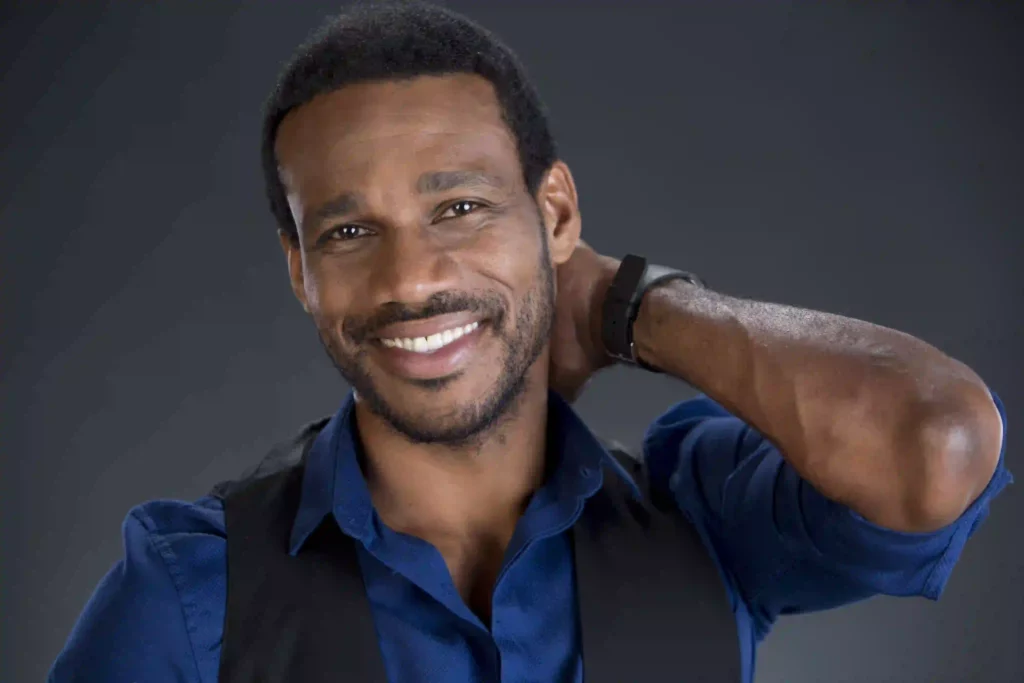When you are taking your headshots, make sure you know which type of headshots you want. There are several types and each serves a different purpose. You must have theatrical headshots if you are targeting theater plays, movies, and TV.
Theatrical headshots are those sets of headshots that show your emotional range as well as the type of characters that you can fit into.
Here I am going to tell everything there is to know about theatrical headshots, including taking theatrical headshots, what to wear, whether one should smile, and the size of the headshot.
Crafting Perfect Theatrical Headshots
Before you go any further, let me tell you what a good theatrical headshot looks like. Here is one example for you.
A good theatrical headshot should have the following qualities:
Emotions
The most important aspect of a theatrical headshot is emotional depth. This is what differentiates it from other headshots.
A headshot should also have an emotional depth that shows something. You should use more than one kind of emotion. It is advisable to have multiple headshots showing different emotions.
And when sending them to a casting agent, send those multiple headshots so that he or she can see your emotional range.
Emotions don’t just come from expressions. It is also about posture, hair, make-up, and also clothing. A headshot as a whole should convey certain kinds of emotions.
If you want to get an idea about what a headshot looks like, just freeze the close-up shots of your favorite actor from his or her movie.
You will observe that each closeup shot is like a headshot and conveys different emotions.
So when getting theatrical headshots, you should try to add some other emotion to them.
Character Types
The best way to add emotion to the headshot is to choose a character.
I had a long conversation about this with actors who crack auditions regularly. Almost all of them agree that it is not about the headshot’s quality, but the relevancy that gets you the auditions.
Most of them would make headshots at home that cater to the audition requirements.
I personally recommend you to have a self-tape set up. So that whenever you want to send out headshots for an audition, you can click some fresh headshots that are in line with the requirements of the audition.
With characterization, you don’t have to go overboard. Just try to get a headshot that shows the casting agent that you fit the requirement.
To do this, you must know everything about the character. Usually, casting agents will give you the details of the character. Go through it properly.
When analyzing the requirements, look for these things:
- The personality of the character
- Looks of the character
- The genre of the movie/tv show
- The physicality of the character
Once you know these things, you should strive to bring these traits to life while getting a theatrical headshot.
If not all, just by nailing the physicality and look of the character, you might be able to get to the right headshot.
If you want to get the characterization right, do check out our worksheet on creating characters.
Expressions
For theatrical headshots, expressions are key as they provide certain emotions to the headshot.
How do you capture the best possible expression for the headshot?
Again, the answer to this question is the type of character you are playing.
What I used to do in my audition days is to prepare the character and pick an emotion that suits the character.
The trick here is to pick an emotion that you can describe in one word, like anger, sad, or happiness. And try to portray it on your headshot.
Also, if you are finding it hard to get the emotion right, you should try to remember the instance that stimulated the same emotion that you are trying to portray.
For instance, if you are trying to portray anger, try to remember an instance from your life that angered you.
While you are reliving the instance in your mind, ask your photographer to take pictures of you.
It works for many actors. It might work for you too.
Try to get a couple of emotions and see which has better depth and portrays you in the skin of the character.
Right Clothing
Clothing is one thing that brings you closer to the character. That is why you see in movies and play too much attention is given to costume.
You should do the same while making theatrical headshots.
Read the character description carefully and try to judge the clothing of the character. Also, knowing little about the project will also help you find the right clothing.
Especially if you know the era in which the story is set, it will help you nail the costume.
You don’t have to go overboard with the elaborate costumes but try to find a simple costume that makes you look like the character.
You can always consult your agent to know more about the character and the story so that you can learn more about the clothing.
Right Lighting
Another thing that can add or enhance the emotions in the headshot is the right lighting.
All professional photographers and filmmakers agree that lighting is one of the most crucial aspects.
If you get it right, it takes the image or video to another level.
Just watch any b-roll of a movie or making of the movie, and compare it with the final movie. You will observe the huge difference just because of the lighting.
So you have to use the lighting for your theatrical headshot.
As an actor, you might not have the right knowledge that you need, but you can always take the help of a fellow aspiring cinematographer.
I advise you to not do it yourself if you have no experience or knowledge of it. Because it can make or break the deal for your audition.
This is the technical aspect of a headshot, so get advice or help from a person who knows something about lighting in photography.
All you have to do is choose the right emotion for the headshot, and whoever is setting the light will help you achieve the relevant lighting.
If you want to learn more about the other types of headshots click here.
Important FAQs
The costume should always be according to the character you want to play. If you want to use the headshot for different types of auditions, choose the character types that fit your look and choose the costume according to it.
Theatrical headshots are all about showing emotions, so the answer is yes. However, ensure you smile in a headshot where the emotion is positive like happiness, excitement, etc.
Generally, the accepted size of theatrical headshots is 8″ X 10″. So stick to it. However, most of the time, you will be sending them digitally, so make sure the resolution of the headshots is high.
Final Thought
Make sure every six months or whenever you change your looks to get a few theatrical headshots so that you can always stay close to how you look in real. And follow all the suggestions I have provided here to have a set procedure whenever you are getting headshots.


